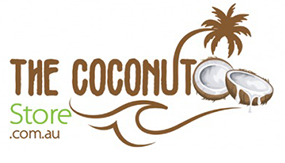
Coconut Textures And Their Uniqueness
Coconut is a tropical fruit famous for its many culinary and medicinal uses. Many use coconut for both sweet and savoury dishes. It is also a flavour enhancer in many recipes. Nevertheless, there is more to this tropical fruit than meets the eye. Coconut comes in three popular textures: shredded, desiccated, and flaked. Each of these textures affects the use of coconut for food and drinks. Read on to learn more about the various types of coconuts and what makes them unique!
What’s the Difference Between Dried and Fresh Coconuts?
First, it’s important to note that dried and fresh coconuts differ. Dried coconuts are mature brown coconuts harvested, dried, and shelled. They’re often shredded or ground into a flour-like texture. Since they’re pre-shredded, they’re easy to use in dishes that call for coconut. Dried coconuts are not as sweet as fresh ones but have a higher oil content than fresh ones. This quality is because fresh coconuts contain coconut water. Dried coconuts don’t hold water and are much lower in moisture, making them more stable and last longer than fresh ones. They’re also more versatile to use for cooking and baking.
Have you ever thought about what type of coconut to use?
Coconut can be purchased sweetened or unsweetened in various forms and textures. If you’re making something sweet, both kinds are used, depending on how sweet the other ingredients in the recipe are. As for coconut textures, here’s what you need to know!
The Coconut Textures
Beyond the delightful taste and nutty aroma, understanding coconut textures becomes a culinary superpower.
Shredded Coconut
Shredded coconut is the most common type of coconut. It is made by shredding the meat of mature coconuts. The “grated” bits of coconut are usually in long thin strips or strands. The thin strands of shredded coconut look a little like shredded cheddar cheese. It is dried and toasted until it becomes crunchy to retain more moisture than desiccated coconut. It is typically a mixture of both white and brown fibres. Shredded coconut is a common ingredient in sweets, desserts, and baked goods. It is an excellent option for those who like to bake since blending it with other ingredients is easy. Shredded coconut can also be used as a topping or garnish. So, why not add more texture to your desserts?
Depending on your recipe, you may choose either sweetened or unsweetened coconut.
Desiccated Coconut
Desiccated coconut is coconut meat that has been dried and contains substantially less moisture than fresh one. The amount of moisture retained in the flesh, not the size of the coconut, distinguishes it.
In comparison to larger strips, desiccated coconut is finely powdered. Its fine texture almost looks like fresh snowfall. It is also usually drier than shredded coconut. However, don’t mistake desiccated coconut for coconut flour; it has more moisture and fat, so they can’t be used interchangeably.
Desiccated coconut is the same as shredded but was dried out longer to become brittle and crumblier. Desiccated coconut is easy to use in recipes because it already has a fine texture, making it great for baking and desserts. We may also use this to sprinkle, or as toppings in savoury dishes or other recipes we fancy. They’re also commonly used in tropical drinks.
Flaked Coconut
Flaked coconut comprises larger, coarser pieces than the shredded kind. Coconut flesh is dried and then made into long, wide flakes.
Coconut flakes from young coconuts are more fibrous, making them easier to grate into a fine texture, but we can also make flakes from mature coconuts.
We can make flaked coconut from fresh or dried coconut meat. It is produced by cutting mature coconuts into thin slices, then drying them out in ovens or frying them until they become crispy. We use coconut flakes to make coconut chips.
Other than shredded, flaked coconut is the most common texture of coconut.
They’re also a perfect option for those who want to bake with coconut but want to use a different texture.
Here’s why knowing coconut texture matters:
Knowing the nuances of coconut textures adds a layer of precision to your recipes. Different textures bring uniqueness to a dish, ensuring that your culinary creations hit all the right notes. Whether you seek the delicate crunch of shredded coconut or the fine elegance of desiccated coconut, this knowledge empowers you to tailor your recipes to perfection.
Not all coconut textures are created equal; neither are the palates they cater to. Understanding these textures allows you to tailor taste to diverse preferences. Shredded coconut, with its delicate strands, brings a satisfying crunch to desserts. Desiccated coconut, resembling fine snow, subtly integrates into baked goods. Flaked coconut, with its larger pieces, introduces a playful crunch. Some may relish the chewiness of shredded coconut as a cookie topping, while others may prefer the subtlety of desiccated coconut in a savoury curry. Tailoring your dishes to individual tastes becomes second nature when you grasp the intricacies of coconut textures. Knowing these details allows you to choose ingredients and experiences for your palate.
Beyond flavour, coconut textures can impact the nutritional profile of your dishes. Add a satisfying coconut texture without compromising health by using more health-conscious recipes. Understanding coconuts and their texture empowers you to make informed choices aligned with your dietary preferences.
The Distinctive Taste Profile of Coconuts
Imagine a taste of coconut that effortlessly combines a subtle sweetness with a hint of nuttiness. With its chewy and slightly dry texture, the white flesh may even carry a nuanced woodiness. While some coconuts lean towards a neutral flavour, a distinct tropical undertone prevails in most varieties. Whether it’s the coconut water, the meat, or the oil, incorporating any type of coconut into your dishes promises a rejuvenating and distinctive layer of flavour.
The Coconut Store’s Organic Coconut Confetti
Coat it, roll it, sprinkle it, spoon it, pinch it, and add it!
Do you constantly crave something new to taste? Do you enjoy experimenting with your food and trying out new recipes? Well, we got you!
Add our 30g pack of Organic Coconut Confetti with Superfoods to your must-try list!
Organic Coconut Confetti is a healthy and delicious way to top off your cakes, treats, smoothie bowls, salads, and even cocktails! Made from 100% organic coconut and natural organic superfood powders, Coconut Confetti has a subtle and naturally sweet coconut taste, making it an ideal addition to food and drinks.
Regardless of the type of coconut you choose, be prepared for a refreshing burst of flavour in every dish!
There’s no need to sugar-coat your treats when you can top them off with our Organic Coconut Confetti!
Choose from desiccated, flakes or shredded textures to find the perfect topping for your next meal or snack.
- Try our Coconut Confetti Chocolate Balls recipe using Coconut Confetti.
- Try our Coconut, Vege and Salmon Summer Salad recipe using Coconut Confetti.
ALLERGEN ADVICE
Coconut allergy is a type 1 hypersensitivity in which the immune system reacts to the presence of specific proteins in coconut as a threat. If you have an allergy or showing symptoms like nausea, vomiting, and skin reactions after ingesting or using coconut or coconut-based products, immediately consult your health provider.
Summing Up
Most of us want to add some coconut taste to our recipes, so knowing their different textures is essential. These unique textures are necessary to mix them in our cooking and achieve that flavour we want.
In many recipes, desiccated and shredded usually appear the same. These are made using the same cooking equipment. They do, however, look completely different. You may use flaked coconuts if you want long, wider flakes.
The texture and taste of each are also different.
Understanding their textures, you can use them interchangeably to make delicious dishes!






